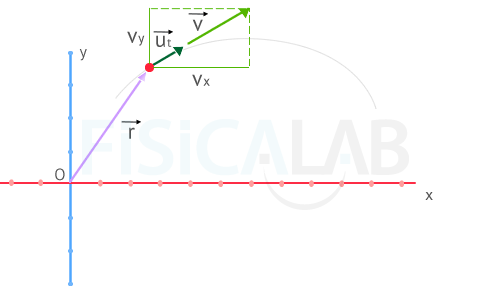The everyday concept of velocity arises when we consider how quick or slow a body is moving. Somehow we relate the displacement of the body with the time invested in it. In this section, we are going to specify what is physical velocity, also known as instantaneous velocity, or simply, velocity. To understand this well, we recommend that you previously read the paragraph in which we present average velocity.
Instantaneous velocity
The
Instantaneous velocity, or simply velocity, is defined as the limit of the average velocity when the time change approaches zero. It is also defined as the derivative of the position vector with respect to time. Its expression is given by:
where:
Velocity is a vector magnitude. Its dimensional equation is given by [v]=[L][T]-1
How is the expression of the instantaneous velocity obtained?
To define the concept of instantaneous velocity with precision we start with the concept of average velocity, which we have already studied, and we are going to help ourselves with the graph in the figure.

The procedure to define the instantaneous velocity or, simply, the velocity of a body at a point A, consists in calculating the average velocity between A and a point as close to A as possible. This is the same as calculating the average velocity in an interval of time as small as possible. In the graph, you can see the position vector of the point A and of the rest of points B, C and D. These are
It is more common to find the velocity vector written by means of its Cartesian components resulting in:
-
velocity vector in 3 dimensional Cartesian coordinates:
-
velocity vector in 2 dimensional Cartesian coordinates:
It is also possible that, like with any other vector, you will find it written as a function of its magnitude. To do this, simply multiply the magnitude of the velocity vector by the unit vector with the same direction as
As you can see, the instantaneous velocity is a vector magnitude that satisfies the following:
- Its magnitude may be expressed:
-
As a function of the displacement vector or as a function of the distance traveled:
-
When the velocity vector is expressed using Cartesian coordinates in 3 dimensions:
-
When the velocity vector is expressed using Cartesian coordinates in 2 dimensions:
-
- Its direction is tangent to the trajectory (it touches it at only one point).
- Its direction is the same as the displacement vector

Cartesian components of the velocity vector
Conclusion
In this section, we have defined the concept of instantaneous velocity based on average velocity, we have studied its magnitude and its direction. Even though we have considered different points of view and different expressions for the velocity vector and its magnitude, normally, you will calculate the velocity as the derivative of the position vector with respect to time.

